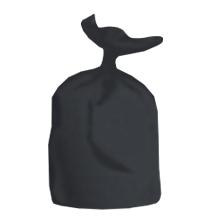In May 2020, the Committee for the Environment & Infrastructure endorsed the redesigned biodiversity strategy for Guernsey - titled the 2020 Strategy for Nature - to drive the long-term management of nature in Guernsey.
In the five years since the launch of the biodiversity strategy for Guernsey there has been a seismic shift globally in public interest and international government action on climate change and nature loss. The scheduled 5-year review of the Biodiversity Strategy was therefore seen as an appropriate time for a redesign of our approach to nature management.
The strategy incorporates a framework of high-level objectives that encompass the latest advances in mainstreaming biodiversity and horizon scanning for pressures on nature, through increasing community awareness of nature and its health and wellbeing benefits.
At the core of the Strategy for Nature is the ethos that the more the community cares for nature, the more it shall want to protect it. The stronger the awareness of the value of nature and the pressures it is facing, the greater the likelihood that individuals, organisations and businesses perform actions to support and protect nature. The more actions to support and protect nature, the more we can ensure a healthy and resilient natural environment and sustainable environment, society and economy for future generations.
Context of the strategy
- In April 2020, the HM Treasury released a report that showed that nature is declining faster than at any time in human history, with a 60% decline in wildlife populations over the last 40 years alone and current extinction rates at 100 to 1,000 times higher than average over the past several million years. Locally, periodic habitat surveys have shown that Guernsey's species and habitats are also in decline due to climate change and other human made pressures.
- To put the decline in nature into an economic context, the World Economic Forum's 2020 Global Risks Report has ranked biodiversity loss as the third most likely risk to the global economy in the next decade. This risk rating is not surprising when the economic cost of biodiversity loss has been calculated to be 7.5% of global GDP and that 50% of global GDP has been found to be moderately or highly dependent upon nature, including: aviation, travel and tourism; real estate; supply chain and transport; and retail, consumer goods and lifestyle.
Intrinsic link to climate change
- Species have evolved to adapt to 'normal' fluctuations in our environmental conditions, but to be able to survive accelerating climate change species need to be able to maintain large, genetically diverse populations to adapt in place or move to more suitable habitats.
- Each species within an ecosystem is interconnected and often dependent on each other. Microbes help maintain soil quality, healthy soils help plants to grow, insects carry pollen from one plant to another, animals eat the plants, and habitats provide a home for animals. Losing one species in this chain may not seem like much but each loss weakens the connections that benefit us all.
- Building resilience of our species and the health of our marine and land environments to adapt to climate change is therefore no longer a 'nice to have', it is a key strategic need for the island. This intrinsic link between climate change and biodiversity loss requires an integrated policy approach to enable the successful delivery of objectives in both policy areas.
Goals and objectives of the strategy
- The strategy has three priority focus areas, or goals, underpinned by nine objectives. The goals work together in continuous loops designed to reinforce each other. By connecting people with nature, we enhance their desire to care for nature, which in turn builds knowledge that can be shared to improve our care for nature and the benefits we receive from connecting with nature. Each objective has a number of progress measures, which will be used to track and report on the success of the strategy.
- Goal 1: Connect our island community with nature:
- Objective 1: Encourage everyone to get out into nature.
- Objective 2: Increase awareness, understanding & support for nature.
- Objective 3. Ensure the economic, social and environmental value of nature is understood and integrated into local decision making.
- Goal 2: Care for nature to ensure the diversity and resilience of our natural capital and assets:
- Objective 4: Ensure an integrated, large-scale approach to the conservation and management of our nature.
- Objective 5: Maximise the diversity of species and ecosystems.
- Objective 6. Reduce pressures on nature and ensure the resilience of our natural capital and assets.
- Goal 3: Foster and share knowledge about nature:
- Objective 7: Bring nature to life through learning.
- Objective 8: Share and use information effectively.
- Objective 9: Improve knowledge about our natural capital and assets to inform decision making.
Guiding Principles
- This framework is comprised of three goals and nine objectives to guide Guernsey's efforts. The goals and objectives are underpinned by six supporting principles:
- Don't take nature for granted; once gone, natural heritage and genetic diversity cannot be replaced.
- Nature management and sustainable development makes good business and economic sense.
- The economic 'value' of nature can tip the balance during decision making.
- 'Insignificant' losses of habitat at a development scale can add up to a significant loss to our natural heritage.
- Climate change adaptation and mitigation and the resilience of nature go hand in hand.
- Healthy ecosystems equal sustainable agriculture and fisheries for future generations.
Strategy for Nature Fund
- The Strategy for Nature Fund is managed by Agriculture, Countryside & Land Management Services in order to offer financial support for environmental initiatives which aim to further the goals and objectives of the Strategy for Nature.
- The Fund has been developed for individuals, students, educational facilities and charity organisations wishing to engage in projects that benefit the environment and local community.
- For more information about the Fund and how to apply visit Strategy for Nature Fund.













